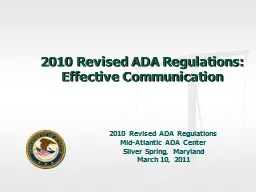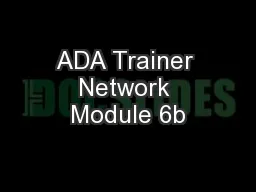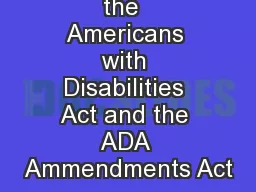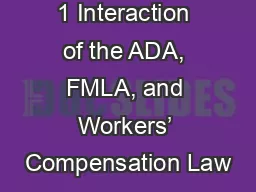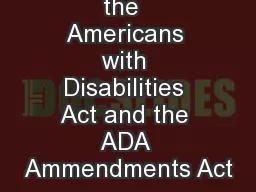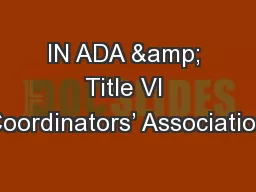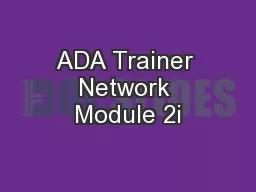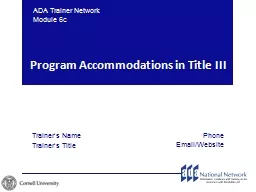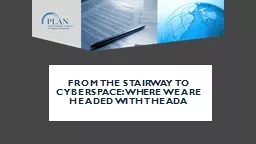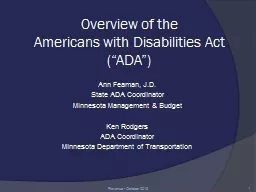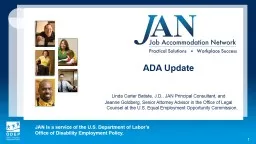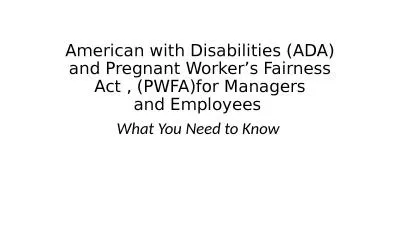PPT-2010 Revised ADA Regulations:
Author : celsa-spraggs | Published Date : 2015-10-22
Effective Communication 2010 Revised ADA Regulations MidAtlantic ADA Center Silver Spring Maryland March 10 2011 Title II Generally Title II entities must take
Presentation Embed Code
Download Presentation
Download Presentation The PPT/PDF document "2010 Revised ADA Regulations:" is the property of its rightful owner. Permission is granted to download and print the materials on this website for personal, non-commercial use only, and to display it on your personal computer provided you do not modify the materials and that you retain all copyright notices contained in the materials. By downloading content from our website, you accept the terms of this agreement.
2010 Revised ADA Regulations:: Transcript
Download Rules Of Document
"2010 Revised ADA Regulations:"The content belongs to its owner. You may download and print it for personal use, without modification, and keep all copyright notices. By downloading, you agree to these terms.
Related Documents

